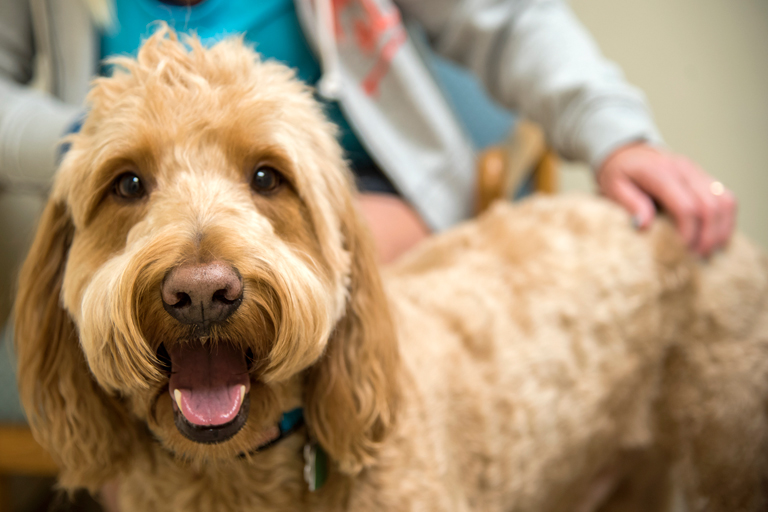Pet Owners
Are you looking for a great pet groomer? Search for a groomer close to you, read reviews and keep track of all your grooming appointments on https://www.petgroomerfinder.com.
Pet Groomers and Their Role in Preventative Health Care
Pet Groomers have an important role in the preventative health care of their clients and a thorough grooming session can help identify and prevent a number of health issues.
All professional groomers agree that it’s essential for dogs to be groomed every 4-8 weeks and they often stress this to pet owners. Routine hygiene sessions entail far more than bathing and the trimming of hair and nails, the groomers carry out a thorough inspection and note any changes to the condition of a pet’s coat and skin. Professionally run grooming shops even keep a record of anything unusual so that they can look for changes in a next visit and notify the pet owners to organize a timely vet appointment, before minor problems turn into major ones.
Grooming parlors should also remind their customers that their pets not only require regular grooming appointments, but should also have a scheduled appointment with a veterinarian at least once a year. These appointments usually include their regular inoculations and a general check-up to identify small issues like weight loss or gain and other issues that only doctors can observe.
Pet Groomer Skills
Their professional training helps pet groomers to understand animal anatomy; important in knowing how to groom a pet without hurting it. These skills and their love for pets make them aware of vital areas that are important to check when they are bathing pets. These include the eyes, ears, teeth, nose, underside, skin, coat, nails and foot pads. The underside of a pet can reveal a lot and pet groomers know where to look for swellings or lumps; especially a swollen anal gland and are trained to notice if a pet is sensitive to being touched.
Vital health signs that groomers look for
Ticks, fleas and ringworm, are more obvious to pet groomers who instantly observe these on dogs. If left untreated, these can cause a number of unpleasant side effects, many of which are uncomfortable to pets. Itching, hair loss, scabs and skin irritations are some of the symptoms and if in the early stages of infestation, the pet owners may not have noticed anything other than a bit of itching or irritation. Some of the complications from fleas are anemia and tapeworms.
Which other conditions do pet groomers notice most?
- Hot spots – These itchy and painful lesions on dogs are caused by acute moist dermatitis and are the result of constant biting, licking or scratching on an area. Called hot spots because of the fact that they become warm from the inflammation, they are prevalent during warmer weather. Once spotted and treated with the right ointment, dogs have almost instant relief.
- Ear infections – Breeds with long droopy ears are more prone to ear infections, but the delicate structure of the ear will cause infections in about 20% of all dogs. Cats can also be affected by ear infection but have far less incidents of it. The exterior signs of otitis are head shaking and scratching of the ear and it is a painful condition. Pet groomers always check pets’ ears at every visit and immediately notice signs of otitis, usually before a dog or cat is in severe pain.
- Eye infections – The initial signs of eye infections are easy for pet groomers to pick up, as the pet may have some swelling or a slight discharge. Often these infections are viral, but may also be from injuries or foreign objects.
- Nail bed infections – The areas where dog play often expose them to bacteria and fungi. A torn or split nail may expose the nail bed to these causing a weakened or infected nail. Sometimes dog nails may become deformed, or the area around the toe where the nail grows out may turn red. Pet groomers and their keen eye will notice any change while cutting a pets nails. These types of infections heal faster if treatment starts sooner rather than later.
- Toe cysts – These develop on the web between the toes of dogs and are usually caused by bacterial infections or skin mites. They can also be caused by ingrown hairs in dogs with short, bristly fur. If the cause is an embedded object then it will have to be removed. Vets treat these by prescribing oral antibiotics.
- Skin infection – Skin infections develop on dogs and cats and can be caused by bacteria, parasites, fungi and even food allergies. Pet groomer will immediately notice any changes to the skin of your pet and the symptoms may include red and itchy skin, or oily and flaky skin, depending on the type of infection. Not all skin conditions cause itchiness and are often missed by dog owners. However, grooming salons tend to pick these up very early and treatment can be started immediately. Allergic reactions are common in pets and the vet will have to find the cause before deciding if a change in diet is needed.
- Gingivitis or periodontal disease – Gum disease is common in dogs but can be prevented if it is detected early. Bacteria are the main culprit here, and it starts to form from the moment a pet eats. Dog’s mouths are more alkaline than humans and the bacteria form plaque at a faster rate. Since pet owners cannot brush their dog’s teeth every day, the bacteria have the chance to multiply. Unfortunately, gingivitis and periodontal disease slowly and detrimentally affect the gums of dogs if left untreated, leading to tooth loss. Pet groomers look for signs which include bad breath, inflamed gums, loose teeth, bleeding gums and excessive drooling. They often include teeth brushing into the grooming routine or offer it as an extra and if done regularly will prevent gum infections. Pet owners should be encouraged to include a tooth brushing routine between grooming appointments and to use dental sticks that also help to maintain doggy teeth between brushing.
- Cancer – Since most pets are seen more often by their pet groomer than their vet, the early signs of cancer may be more noticeable to the groomer. Groomers are on the lookout for tumors or lumps, and if the pet is a regular they will know if they are new or were there before. Not all growths are cancerous, but it is best if they are seen to immediately.
Benefits of grooming for pet health
Besides detecting health issues, a good grooming can also prevent them. Cats and dogs that get mats and tangled hair can suffer from poor circulation which can lead to hot spots, restriction of movement and other health issues. Mats in their coats are especially painful for dogs and cat breeds with longer coats. Regular coat brushing also stimulates blood circulation and promotes a healthy skin, while it also greatly reduces shedding.
After a grooming session, pets are mat free, and feel a new-found freedom in their movement. The job of the pet groomer is to ensure that a pet is comfortable at every stage of a professional grooming session and that they are never sore.
Professional pet groomers have the responsible job of ensuring that every pet leaving their premises looks and smells great. They inform pet owners of unusual changes to their pet’s health so that they can take immediate action, ensuring that any troublesome issues are attended to by a veterinarian.
Pet groomers develop a connection with the pets that they groom, especially if they meet regularly. This caring enables them to offer an important part in the preventative health care of these beautiful and loved animals.
Pet Owners
Are you looking for a great pet groomer? Search for a groomer close to you, read reviews and keep track of all your grooming appointments on https://www.petgroomerfinder.com.

